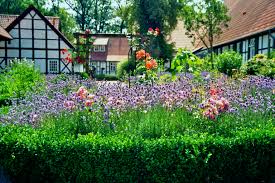
How professional gardeners prepare in the fall and early winter makes a substantial difference in the results of the following spring. Hearty, mature plants may require very little preparation; while newer, more tender, and still developing plants do need special attention to successfully survive harsh winter weather in the Northern United States and Canada.
Protecting Roses and New Perennials
A successful strategy for protecting those valuable roses and new perennials is to encase the plants with chicken wire or wire mesh after the first freeze and fill the cylinder with dried leaves. Doing this is best shortly after the first hard freeze as the enclosure could quickly become a rodent’s nest otherwise.
Mulch for Protection
Mulching in late fall protects plants and stabilizes the soil temperature around the roots during the winter. Mulching between 3 to 5 inches helps insulate the plants and prevent frost heaves that can eject shallow bulbs and or expose plant roots. Cut down perennials and remove all dead annuals at this time. The dead material can cause disease and harbor insect eggs.
Winterizing Evergreens
Once winter sets in, evergreens stop taking in water. However, you should minimize the effects of dry winter winds by putting up a sturdy windscreen, possibly of burlap. The colder, drier winds generally blow from the north or west, so keep that in mind when creating a shelter for trees. Don’t wait until the ground completely freezes to begin. Drive the anchoring stakes before the soil freezes. Once the weather changes, securing your burlap to the stakes becomes a simple process.
Wrap Young Trees
Wrap young trees, especially those fruit trees with a thin, smooth bark layer, to protect against sun scald. The typical paper commercial tree wrap will be sufficient. Wrap from second or third branch to the soil line to ensure the tree is adequately protected. Start from the top and work down, overlapping as you go, to keep water from penetrating the wrapping.
Protect Tender Shrubs and Perennials
For those young or delicate plants and shrubs, build up the soil at the bottom, surround the base with screening, and pack material like leaves or straw into the space between the screen and the plant to provide additional protection.
Plan Ahead
Winter comes every year. Landscapers should discuss a winterizing plan with their clients during the early fall to avoid costly omissions.
